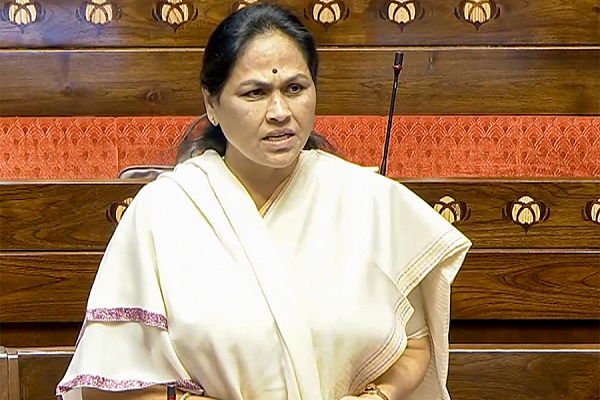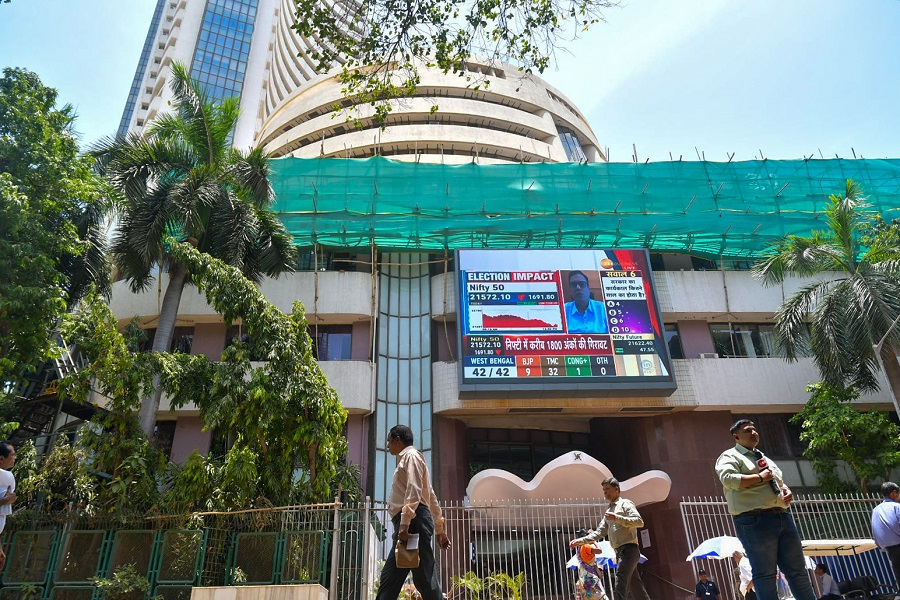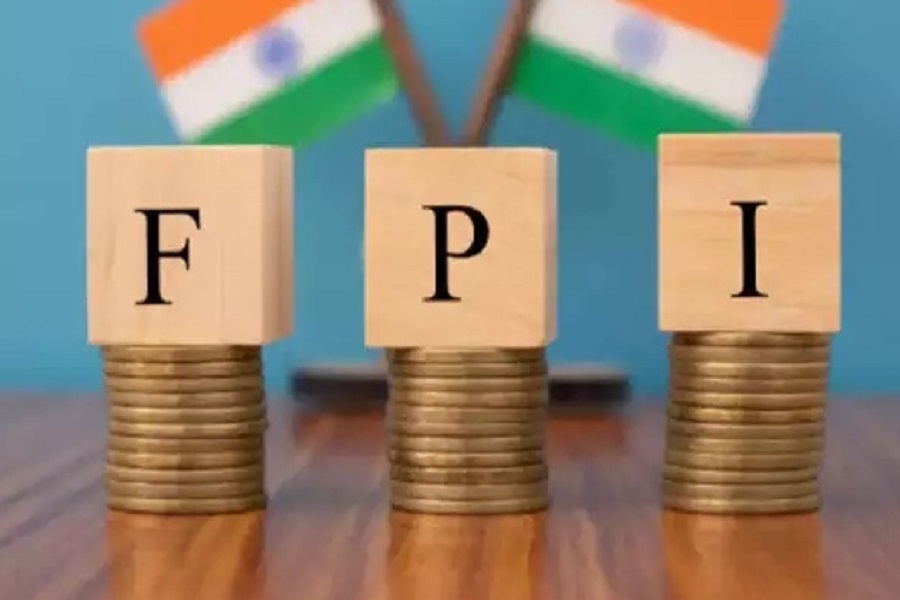What would the inclusion in global bond indices mean for the Indian economy? - Motilal Oswal

What would the inclusion in global bond indices mean for the Indian economy?
Net impact may not be large
The noise around the inclusion of India’s sovereign bonds in global bond indices is growing stronger. In this note, we discuss our views on the likely impact of such an inclusion on India’s domestic bond yield, the Indian Rupee (INR), and economic growth. Assuming ceteris paribus, the impact of the inclusion is pretty straightforward. Higher demand for Government of India (GoI) securities would raise prices, lower bond yields, and strengthen the INR. With a lower risk-free rate, it would have the potential to reduce the cost of borrowing across borrowers. Nevertheless, there would be no ceteris paribus and hence the actual impact would not be so straightforward.
GoI had paved the way for increasing the foreign holdings of GoI securities in the Union Budget 2019–20. “India’s sovereign external debt to GDP is among the lowest globally at less than 5%. The Government would start raising a part of its gross borrowing programme in external markets in external currencies. This will also have beneficial impact on demand situation for the government securities in domestic market,” Ms Nirmala Sitharaman stated in her first Budget Speech as India’s finance minister on 5th July 2019 during the second innings of the NDA government. GoI took a further step in the subsequent Union Budget 2020-21 when the FM announced that “Certain specified categories of Government securities would be opened fully for non-resident investors, apart from being available to domestic investors as well.”
Following the announcement in Feb’20, the Reserve Bank of India (RBI) introduced a separate channel called the Fully Accessible Route (FAR) to enable non-residents to invest in specific GoI securities without being subject to any investment ceiling. In Apr’20, the RBI specified five securities under the FAR route totaling USD64b (or INR4.9t). The RBI stated that all new issuances of Government securities of 5-year, 10-year, and 30-year tenors from the financial year 2020-21 will be eligible for investment under the FAR as ‘specified securities’.
Consequently, there are now 14 specified securities under the FAR route amounting to USD205b (or INR15.2t). Although there are no investment limits on FAR-specified securities, foreign portfolio investors (FPIs) hold only ~3% of such securities to date (Exhibit 1). The share of FPIs in India’s outstanding dated GoI securities was just 1.8% as of 1QFY22, the lowest in more than 7 years, compared with its peak of 4.6% of outstanding stock in 2QFY18 (Exhibit 2). Not surprisingly, then, FPIs utilize less than 40% of the upper limit in central government securities today, compared with more than 95% in mid-FY18.
Net impact on bond yield / INR may not be large: India is among the last of the emerging markets (EMs) to be included in the global bond indices. With the second highest stock of outstanding government securities totaling USD2.3t (Exhibit 3), the opportunity for investors and borrowers is significant. Therefore, the inclusion of GoI securities in global bond indices would increase the share of FPIs in the specified securities and thus in total government debt.
Depending on the weight assigned to India and the global benchmark(s) in which GoI securities are included, the expected inflows could range between USD10–30b. Considering that the total capital inflows in India have averaged at USD66b per annum in the past five years, annual inflows on account of the global bond inclusion could range at 15–45%. With such large capital inflows, the INR could easily strengthen to 70/USD or fall even below this, if left unchecked – this is where it starts to get complicated.
It is abundantly clear that higher demand for G-secs among foreigners would help raise their prices and lower bond yield. However, at the same time, the INR would have the potential to strengthen significantly against the USD, if left unchecked. Since both the currency and domestic bond markets impact a nation’s financial conditions index, these two opposing forces (lower yield and stronger currency) would offset each other and the final impact would depend on the extent of each impact – which is difficult to judge at this stage. It also means that this policy would incentivize (or favor) the domestic sector at the cost of exporters, which seems to be in contrast with recent policies. In any case, the net impact would be lower than the gross impact.
The market-determined INR, however, is unlikely. Policymakers have shown their bias against steep appreciation (or depreciation) in the INR, which has remained range-bound in the past 18 months (except exceptional periods like Mar-Apr’20). Therefore, it is highly likely that the RBI would intervene in the Foreign Exchange (FX) market to mitigate the appreciation bias in the INR due to heavy capital inflows. This would help push India’s FX reserves (FXR) even higher.
However, since the RBI intervenes in only two asset classes – FX and domestic G-secs – the higher accumulation of FXR implies sell-offs (or lower purchases) of G-secs. For the past three years, the RBI has absorbed a lot of the FX inflows, which has kept the INR very stable. This sharp accumulation of FX reserves has curtailed the RBI’s ability to make large-scale G-sec purchases; as a result, domestic bond yields have not fallen as much as desired (Exhibit 4).
This is particularly true as it is highly likely that the RBI would want to refrain from expanding its balance sheet meaningfully over the next few years. The central bank’s balance sheet expanded to 29% of GDP in FY21/1QFY22 from 21% of GDP in 3QFY20 (Exhibit 5). Any monetary normalization would certainly mean the RBI’s balance sheet would be scaled back. This implies that if it were to buy more FX (adds to FXR), it would have to sell (or buy less) G-secs to keep its size in check.
The actual impact of India’s inclusion in global bond indices would be very different when the RBI intervenes compared to the scenario in which the RBI does not intervene (Exhibit 6). Not only would it help mitigate the appreciation bias on the INR but also reduce the likely positive impact on bond yields – as the RBI’s selling would offset additional foreign demand for G-secs. After banks and insurance companies (ICs), the RBI is the third largest holder of G-secs, accounting for 17% of the outstanding dated government securities in the country (Exhibit 7).
Impact on growth: There are two ways in which the inclusion in global bond indices could help drive growth higher:
* As government bond yields reduce, this would have the potential to impact the cost of borrowings of the entire range of borrowers, from corporate to retail. Nevertheless, as mentioned above, unless the RBI decides to leave the FX market uninterrupted – which is highly unlikely – the impact on bond yields is likely to be subdued.
* There is a possibility that with an additional source of financing fiscal deficit, the GoI feels more confident about supporting growth rather than keeping fiscal deficit in check. In other words, GoI may choose to expand its fiscal deficit to support domestic growth, which could be financed through foreign borrowings after the global bond inclusion (Exhibit 8).
* This argument is also unrealistic as a higher fiscal deficit may entirely erase the small positive impact on bond yields that we discuss above. On the contrary, it may prove counter-productive if foreign investors do not feel confident about it. In fact, it is widely argued that the global bond inclusion would act as a check on the GoI to maintain good fiscal health.
* Thus, overall, there is a high likelihood that either a) the hands-off approach by the RBI – as India is included in global bond indices – would help reduce bond yields, but strengthen the INR or b) the RBI’s intervention would ensure that demand from overseas is offset by the RBI’s selling, so that INR does not appreciate meaningfully.
* In any case, the actual impact on India’s financial conditions would be (far) lower than the gross impact (when one considers only the higher G-sec demand). Furthermore, the growth impact may also be minimal, if any.
To Read Complete Report & Disclaimer Click Here
For More Motilal Oswal Securities Ltd Disclaimer http://www.motilaloswal.com/MOSLdisclaimer/disclaimer.html SEBI Registration number is INH000000412
Above views are of the author and not of the website kindly read disclaimer





















